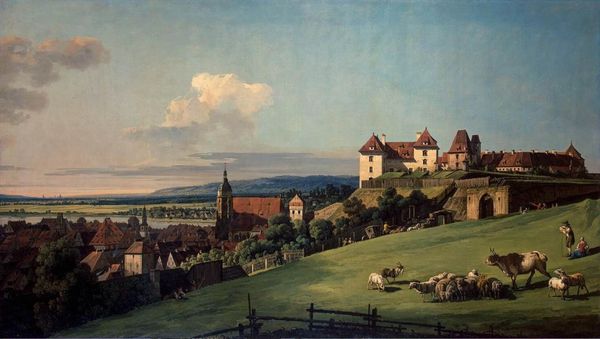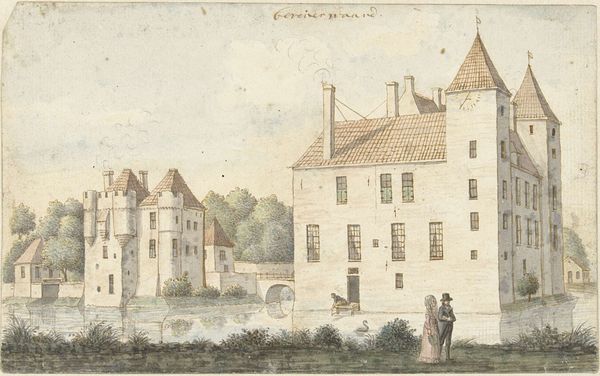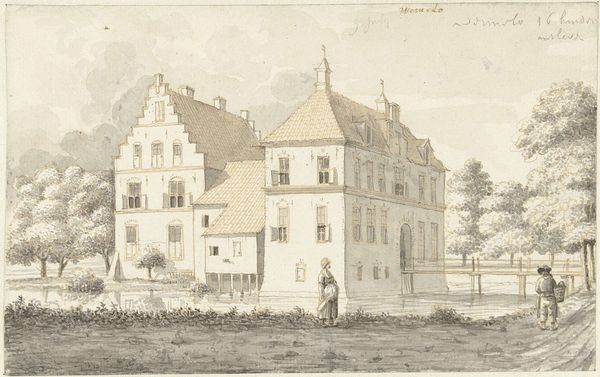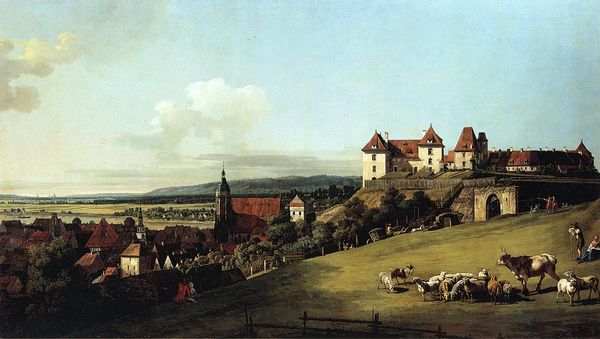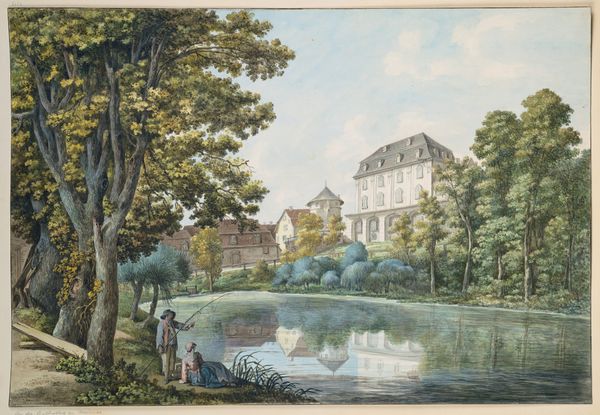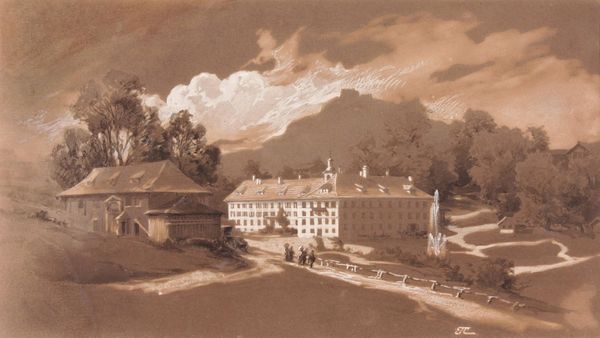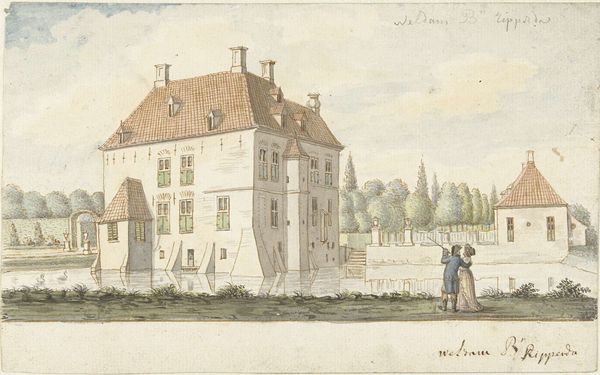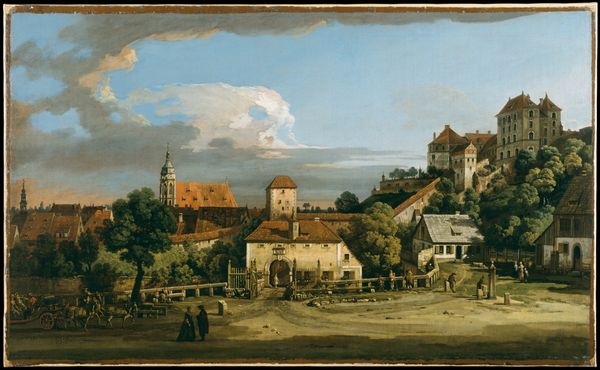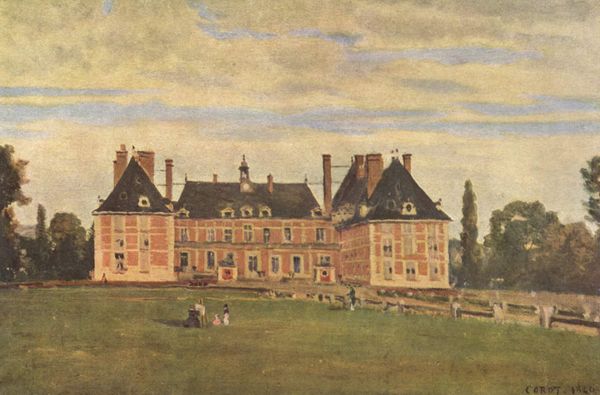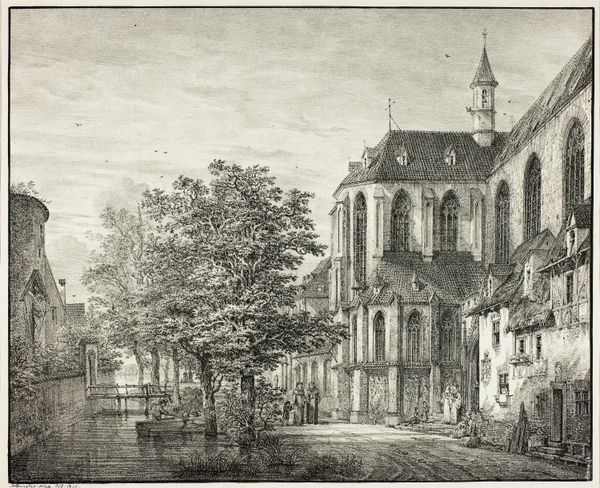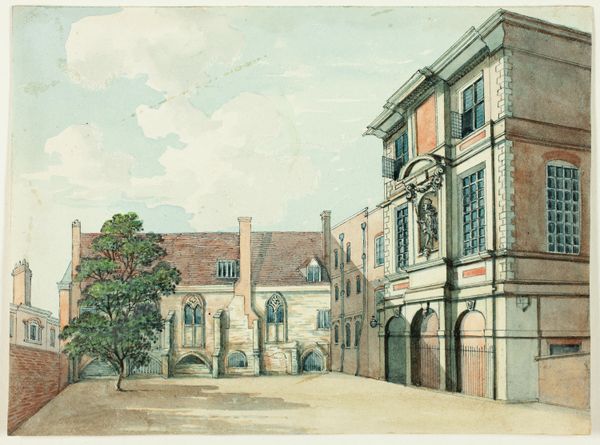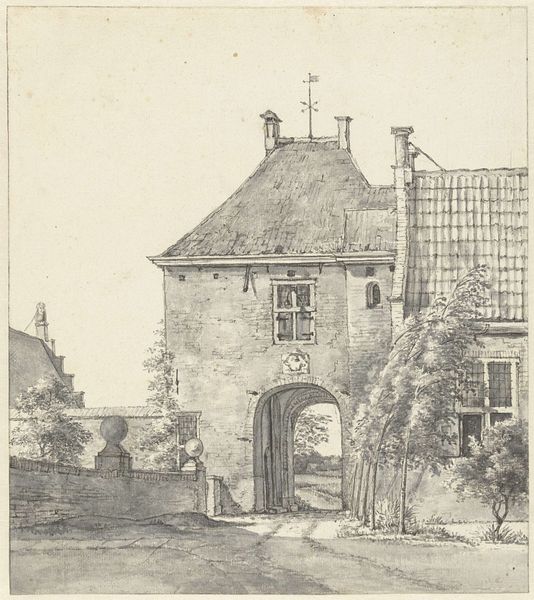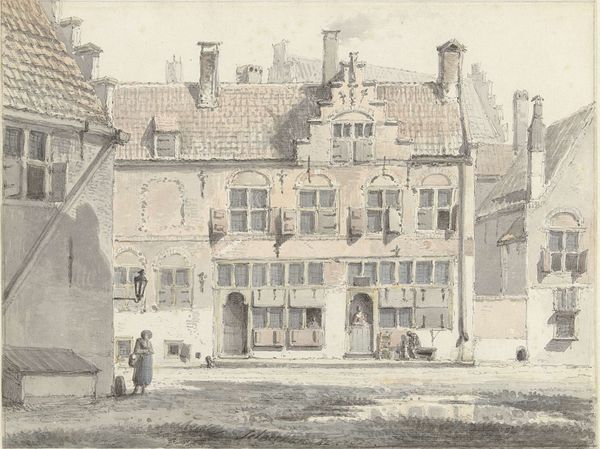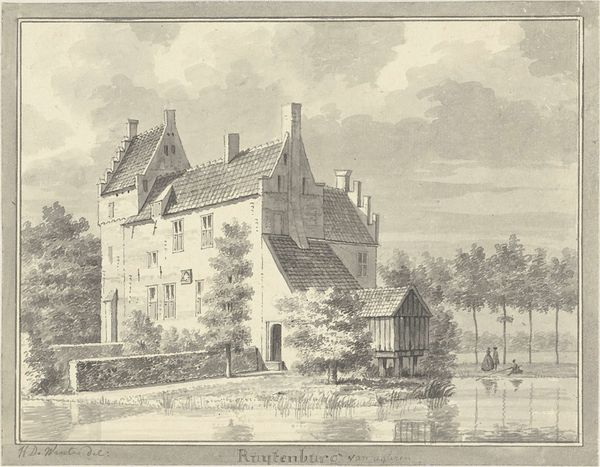
The Fortress of Königstein: Courtyard with the Magdalenenburg 1756 - 1758
0:00
0:00
painting, oil-paint
#
baroque
#
painting
#
oil-paint
#
landscape
#
perspective
#
oil painting
#
cityscape
#
genre-painting
#
history-painting
#
realism
Dimensions: overall: 48.3 x 78.7 cm (19 x 31 in.) framed: 63.18 x 94.3 x 6.03 cm (24 7/8 x 37 1/8 x 2 3/8 in.)
Copyright: National Gallery of Art: CC0 1.0
Editor: So this is Bernardo Bellotto's "The Fortress of Königstein: Courtyard with the Magdalenenburg", painted sometime between 1756 and 1758, using oil paints. The detail is just incredible. What stands out to you about this piece? Curator: I find myself focusing on the very *making* of this image, its production within a specific social context. Consider the procurement and cost of pigments during this period, affecting the range and vibrancy Bellotto could achieve. How does this relate to the patronage system in place at the time? Editor: I hadn’t thought about the paint itself. Curator: Think of the labor! The preparation of the canvas, the grinding of pigments – it wasn’t simply about Bellotto’s individual genius, but also the skilled labour that underpinned his artistry. Do the people depicted within the courtyard appear to represent various social strata, consuming leisure in different ways? Editor: Some look like they're working, others are strolling... Yes, I see what you mean. The very materials and their access dictated what Bellotto could represent and who was present. What about his style and his adherence to realism? Curator: Realism wasn't merely about reflecting the world 'as it is,' but a deliberate choice influenced by the demands of the market and the artist's position. Royal patronage wanted clarity and recognisability as forms of visual accountability, so can we appreciate how the aesthetic is intrinsically tied to socio-economic and political elements? Editor: So even something that appears to be straightforward documentation of a place tells a story about labor and resources? That’s quite eye-opening. Curator: Exactly. It’s a complex web of production, consumption and representation that a Materialist lens reveals. Hopefully, this encourages us to move past admiring a pleasing cityscape, and appreciate this artwork's multifaceted connection to material history.
Comments
No comments
Be the first to comment and join the conversation on the ultimate creative platform.
